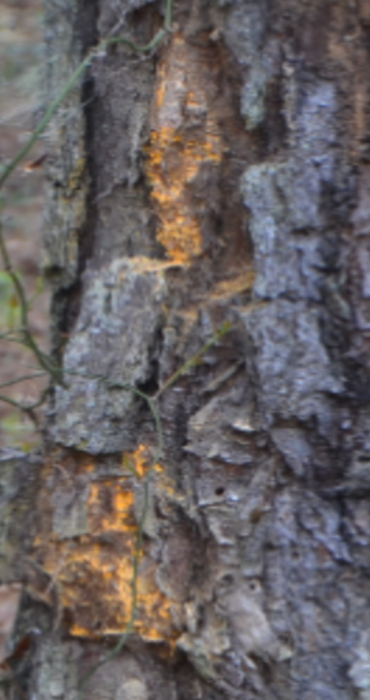Article Written By: Les Harrison
With all the current information of contagious diseases, it is important to remember humans are not the only susceptible species in Wakulla County. Whether slow or fast, the results can be tragic for the unfortunate recipient of the undesired condition.
Not often discussed in great length, trees are subject to infection from other trees. While most trees are considered almost problem free, their health is important too.

The usually hardy pines have their problems and upcoming tropical storms provide the ideal time for them to succumb to the condition which should be recognized and reacted to beforehand. One of those windows to the future is a bulbous gall easily observed but usually passed by.
Fusiform rust is caused by the fungus
Fusiform rust is caused by the fungus Cronartium quercuum f.sp. fusiforme. It has been identified as the most serious disease affecting pines in the southeastern U.S. and killing many young trees.

It is usually found in loblolly and slash pine species, both of which are commonly found in the wild and planted stands. Occasionally this disease is observed in longleaf pines as well.
The infections typically result in swollen galls on the branches and stems. These growths vary in appearance, but are usually the shape of a spindle or cylinder.
Sometimes the branches and stems are killed past the gall and breakage is common. Another symptom of this condition is pitch exudation.
Pine sap leaks or weeps from the gall giving it the moist appearance of a septic wound. Opportunistic insects and the fungus cause this condition.
Curiously, the disease is not spread from pine to pine. The spores of this fungus are spread on the wind to the tender young leaves of oaks, with the red and black oaks be particularly susceptible.
Water oaks and laurel oaks
Water oaks and laurel oaks are two of the host species which are quite common in Wakulla County. It should be noted these are the same oak species which also host the multitude of cankerous growths inflicted by the tiny oak gall wasp.
The disease is passes around among oaks through a series of different spore types until warm temperatures and high humidity develops. A tiny spore called a basidiospore or sporidia is produces and scattered on the breezes.
The pine needles and tender, succulent bark are ideal for a new infection. Only a few hours on the pines vulnerable surface are necessary for the fungus to become established.
The sporidia are extremely delicate
If the humidity suddenly drops, the pines may be spared infection. The sporidia are extremely delicate and quickly loose there infectious ability if the environment dries out.
If the pine is infected after eight years of age, it will suffer few ill effects from the disease, but can aid with the fungus’ dispersal. But even that is a problem and the rigidly attached pine cannot come inside with the rest of us to avoid contamination.
To learn more about pine problems in Wakulla County, visit the UF/IFAS Wakulla County website at http://wakulla.ifas.ufl.edu or call 850-926-3931.
If you have any questions or suggestions for future articles please email to wakullamg@ifas.ufl.edu
| The Institute of Food and Agricultural Sciences (IFAS) is an Equal Opportunity Institution authorized to provide research, educational information, and other services only to individuals and institutions that function with non-discrimination with respect to race, creed, color, religion, age, disability, sex, sexual orientation, marital status, national origin, political opinions, or affiliations. U.S. Department of Agriculture, Cooperative Extension Service, University of Florida, IFAS, Florida A&M University Cooperative Extension Program, and Boards of County Commissioners Cooperating |
 0
0

